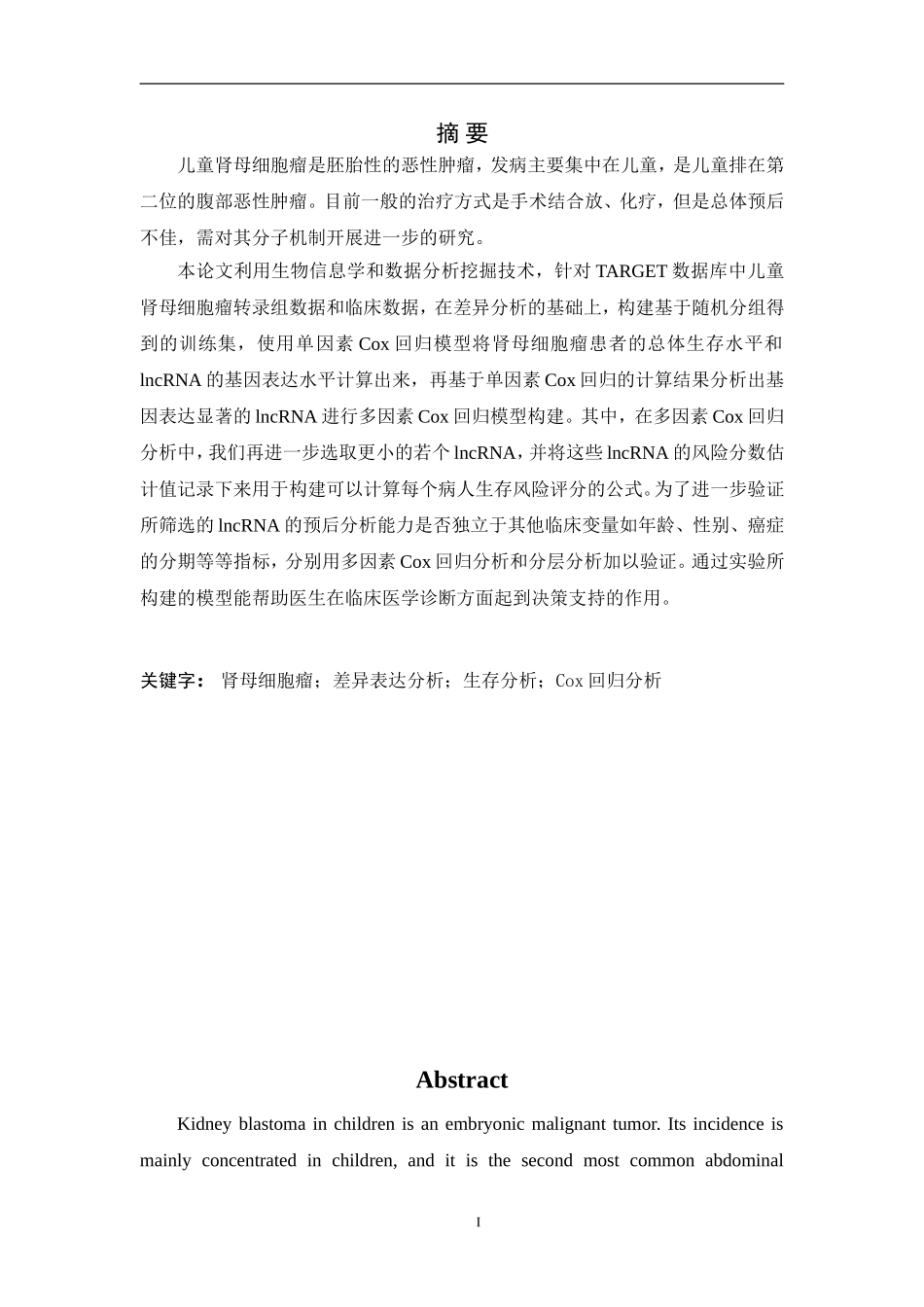I摘 要儿童肾母细胞瘤是胚胎性的恶性肿瘤,发病主要集中在儿童,是儿童排在第二位的腹部恶性肿瘤。目前一般的治疗方式是手术结合放、化疗,但是总体预后不佳,需对其分子机制开展进一步的研究。本论文利用生物信息学和数据分析挖掘技术,针对 TARGET 数据库中儿童肾母细胞瘤转录组数据和临床数据,在差异分析的基础上,构建基于随机分组得到的训练集,使用单因素 Cox 回归模型将肾母细胞瘤患者的总体生存水平和lncRNA 的基因表达水平计算出来,再基于单因素 Cox 回归的计算结果分析出基因表达显著的 lncRNA 进行多因素 Cox 回归模型构建。其中,在多因素 Cox 回归分析中,我们再进一步选取更小的若个 lncRNA,并将这些 lncRNA 的风险分数估计值记录下来用于构建可以计算每个病人生存风险评分的公式。为了进一步验证所筛选的 lncRNA 的预后分析能力是否独立于其他临床变量如年龄、性别、癌症的分期等等指标,分别用多因素 Cox 回归分析和分层分析加以验证。通过实验所构建的模型能帮助医生在临床医学诊断方面起到决策支持的作用。关键字:肾母细胞瘤;差异表达分析;生存分析;Cox 回归分析AbstractKidney blastoma in children is an embryonic malignant tumor. Its incidence is mainly concentrated in children, and it is the second most common abdominal IImalignant tumor in children.At present, the general treatment method is surgery combined with radiotherapy and chemotherapy, but the overall prognosis is poor, and further research on its molecular mechanism is needed.In this paper, using bioinformatics and data analysis mining technology, aiming at transcriptome data and clinical data of childhood nephroblastoma in TARGET database, on the basis of difference analysis, a training set based on random grouping was constructed, and the overall survival level and gene expression level of lncRNA were calculated using univariate Cox regression model, and then based on single gene.The calculation results of plain Cox regression analysis showed that lncRNAs with significant gene expression were constructed b...


